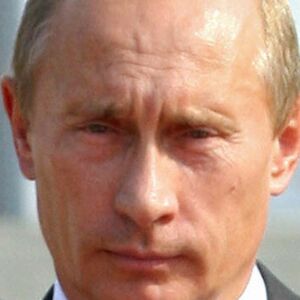
Russia Bolstering Its Position Via Strategic Arms Sales
Russia’s president is forging Asian alliances through a series of arms deals.
In the latest of these, President Vladimir Putin, on his way to the annual Asia-Pacific Economic Cooperation (apec) summit in Australia on Thursday, stopped off in Indonesia to broker a billion-dollar arms deal with Defense Minister Juwono Sudarsono. Russia is using arms diplomacy to extend its sphere of influence into this Southeast Asian country.
Sudarsono welcomed the strengthening ties between Russia and his country. It was an opportunity to “reduce dependence on the United States,” which too often links military aid with human rights issues, he commented. The deal gave the Indonesian military 20 tanks, 15 helicopters, and two Kilo-class submarines, to be paid for over the course of the next 15 years.
The Washington Post reported that Indonesia “has been looking for other sources of arms since Washington cut military ties over human rights concerns in 1999, when Indonesian troops and their militia supporters killed more than 1,000 people in the breakaway province of East Timor.” Russia, on the other hand, seems to have no such qualms as long as it is able to form an advantageous alliance with an energy-rich country.
Moscow’s ambitions for spreading its military and economic power extend far beyond Indonesia. Already, Russia is the leading supplier of weapons to Asia. Traditionally, its two largest arms sale customers have been China and India.
More recently, its arms sales are expanding beyond these two nations and extending into Southeast Asia. The International Herald Tribune reports that Russia has already sold advanced fighter aircraft, attack helicopters, missiles, tanks and artillery to Malaysia, Indonesia, Vietnam, Myanmar, Bangladesh, Laos and South Korea.
These arms sales are motivated by more than a desire to make quick money. “The Russians are not indiscriminately selling arms,” Dr. Alexey Muraviev, a strategic analyst at Curtin University of Technology in Australia, said. “Russia has pursued a policy driven by strategic design. If it creates a strong client base, that can later be transformed into a larger relationship.”
The fact that the Russians are agreeing to flexible payment terms including counter trade, offsets, debt-swapping and licensed production agreements shows that their ultimate goal isn’t monetary. Russia is returning to its former position as a dominant Asian military and economic power.
“The West and the Pacific community must come to terms with the fact that Russia is back,” commented Muraviev. “Russia no longer wants to be driven by a Europe-Atlantic agenda alone. Its military might is on the rise.”
Russia is welding the rest of Asia to itself through strategically selling military arms. For more information on the rise of a future power bloc of nations in Asia, read Russia and China in Prophecy.
